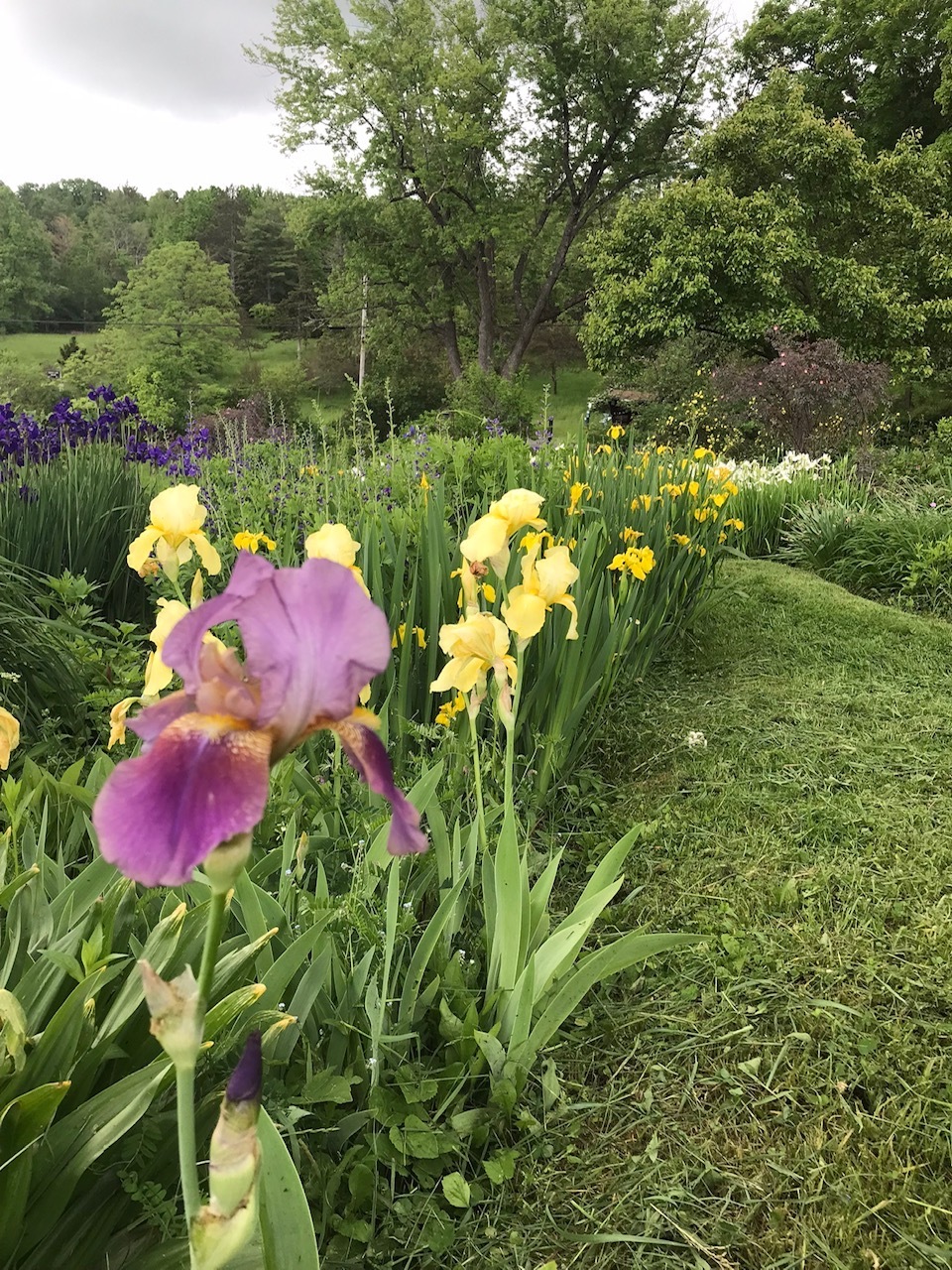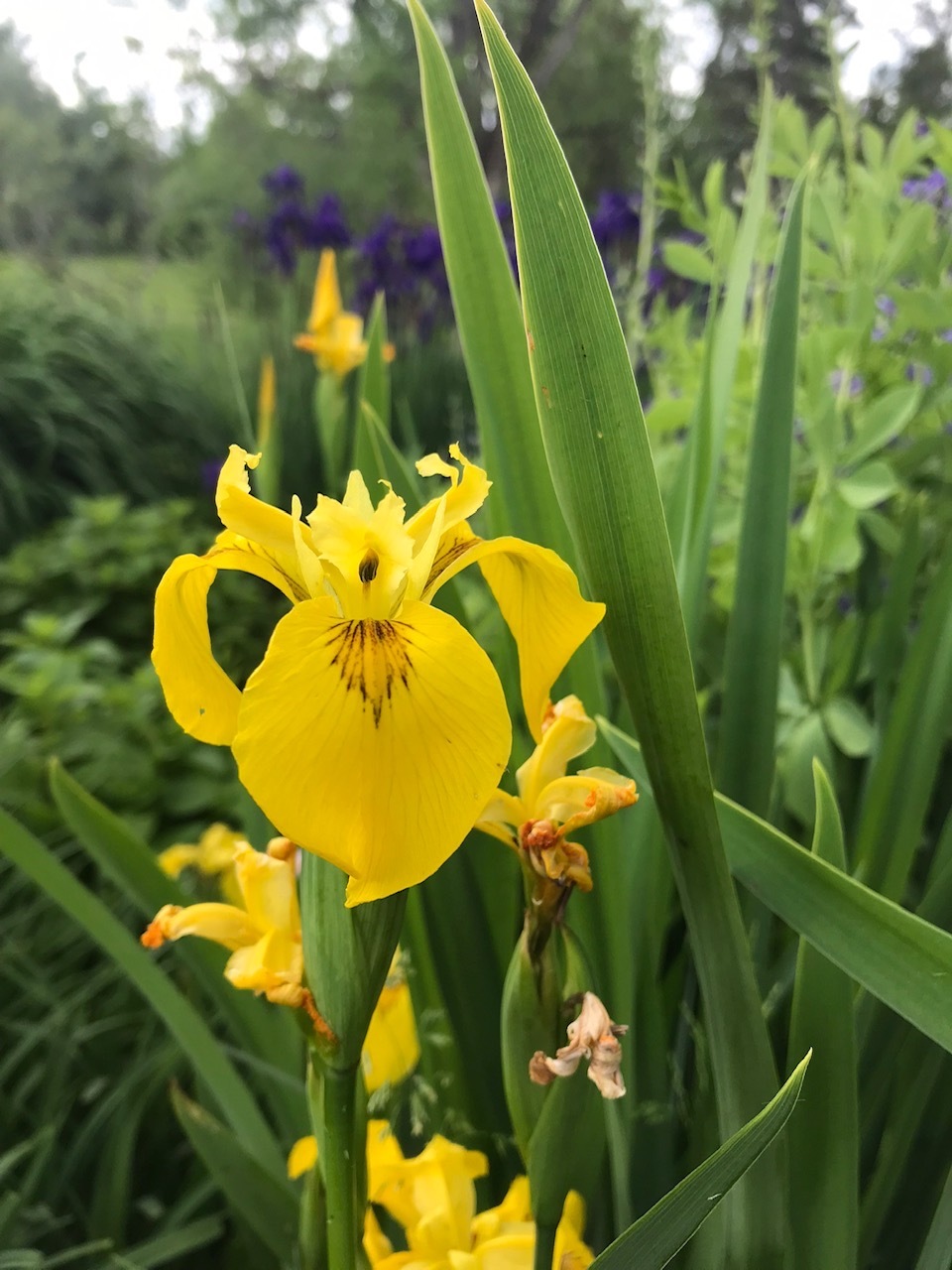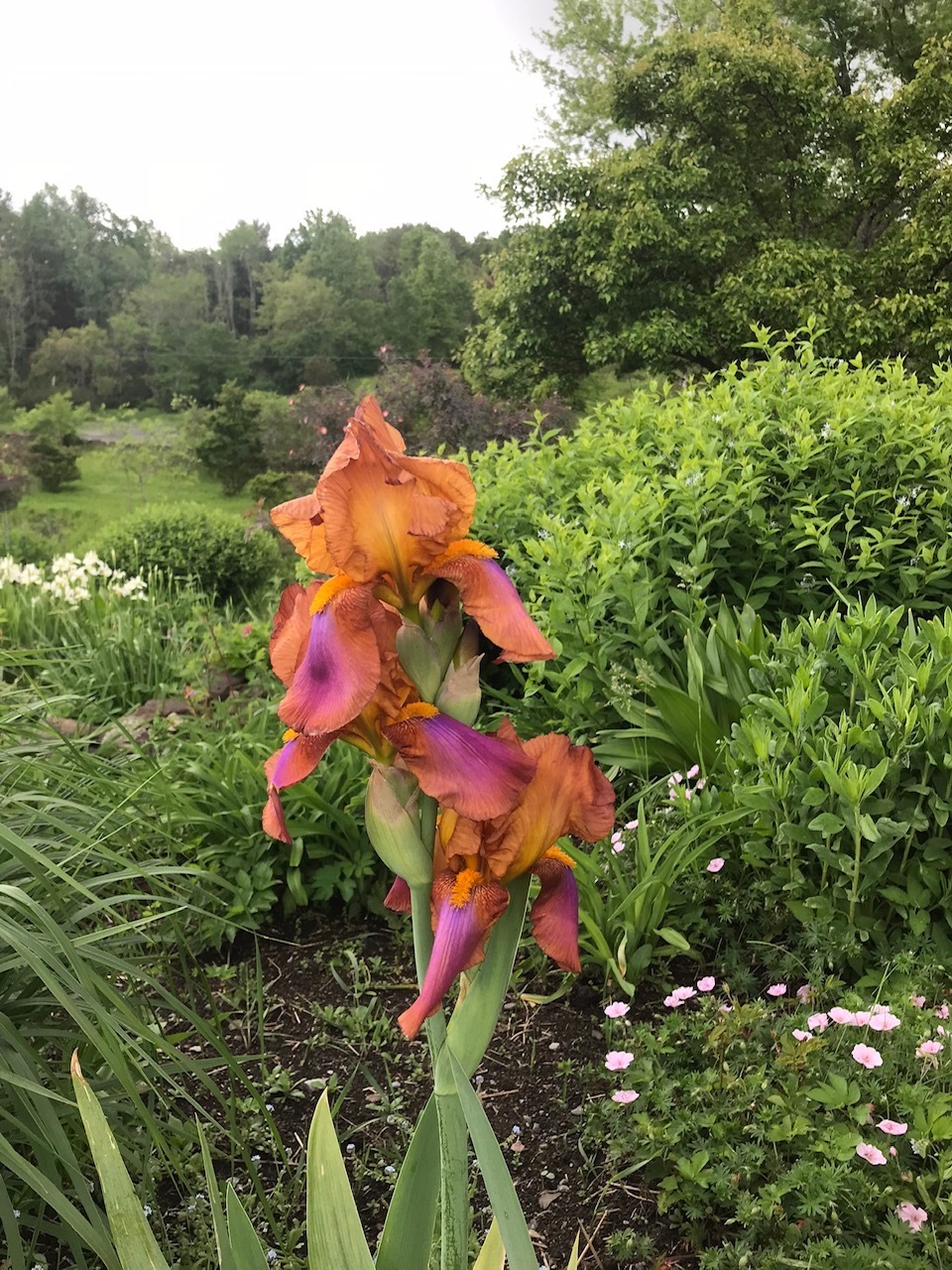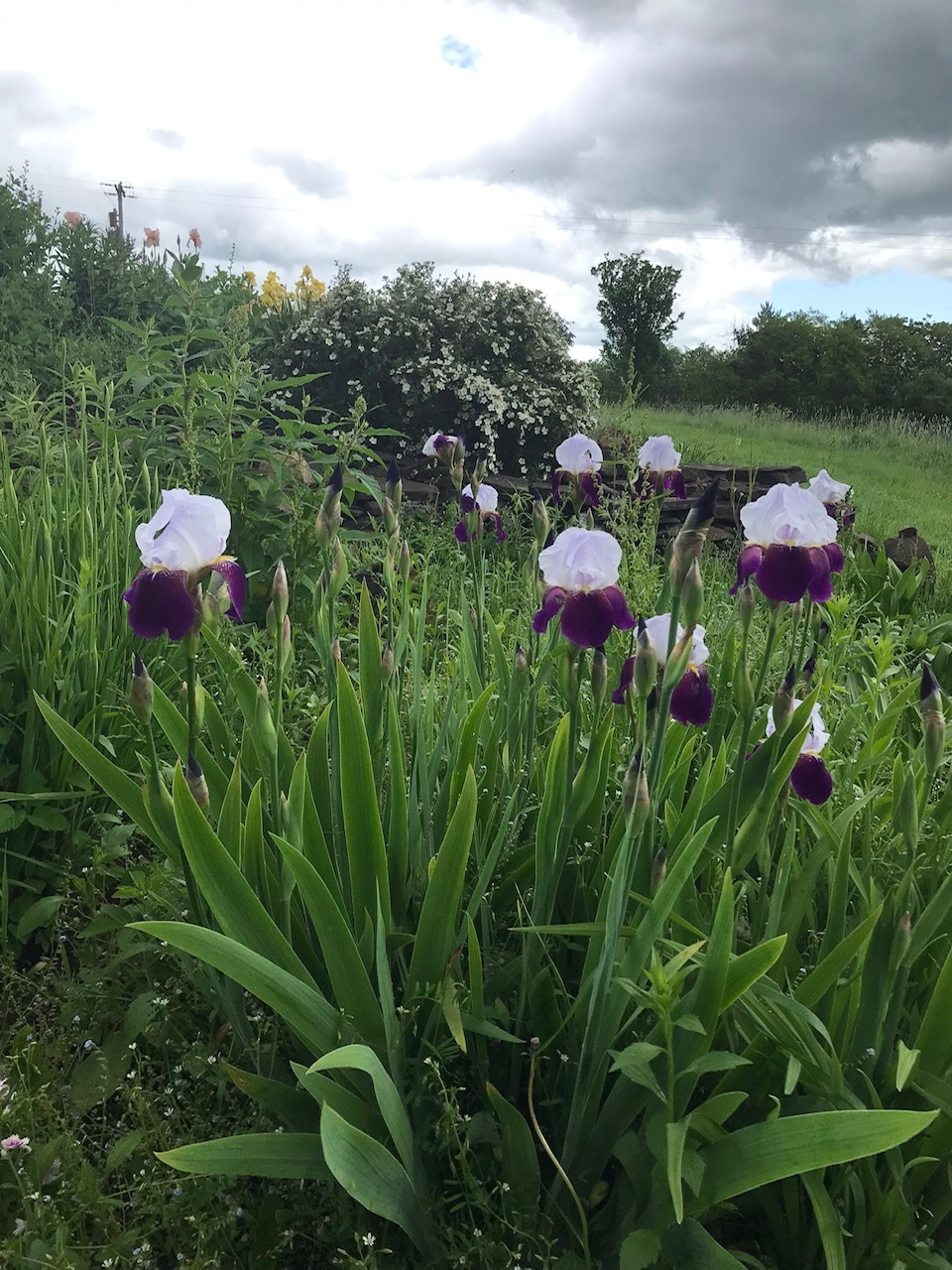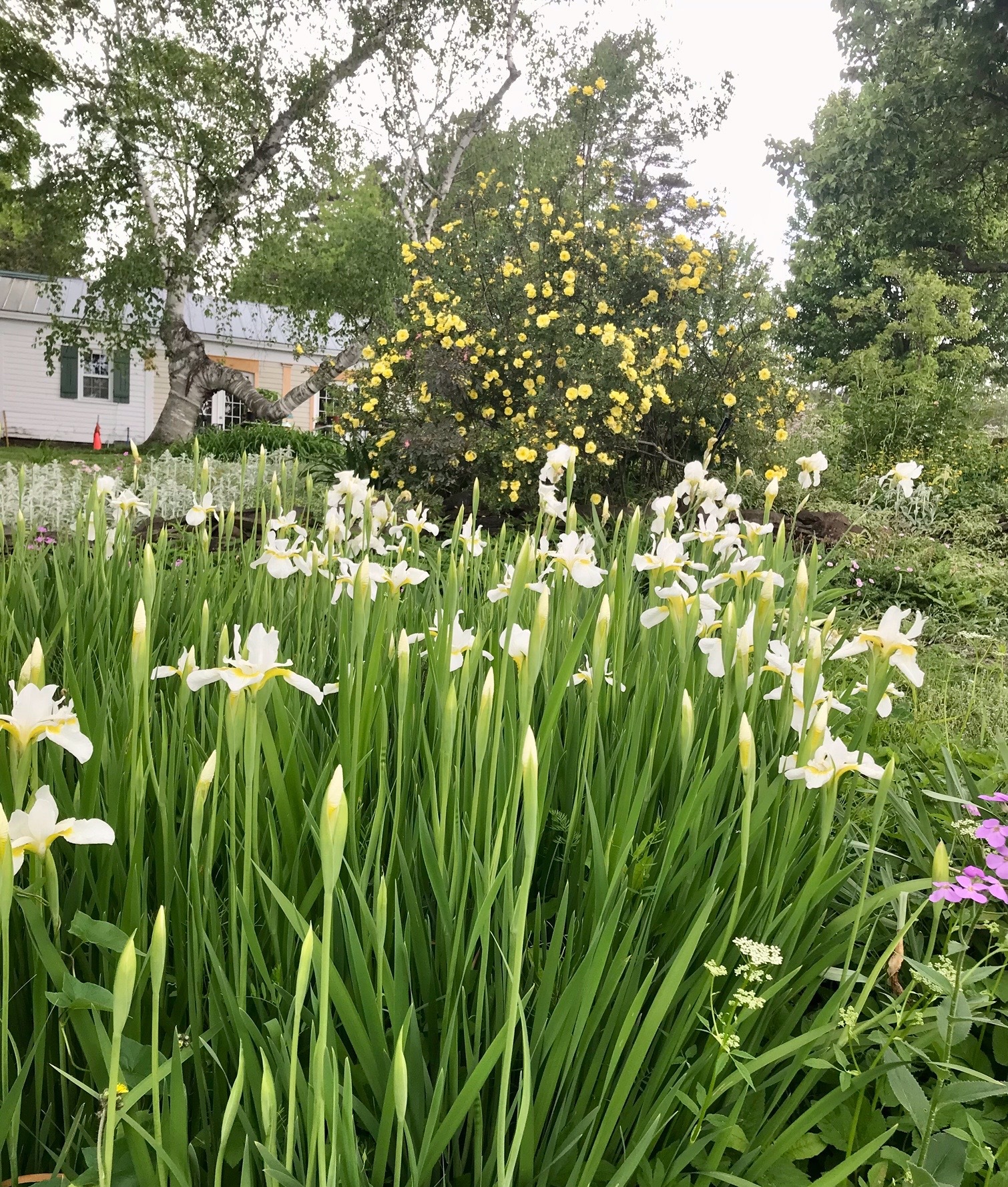Derived from the Greek word for “rainbow“ and a frequent subject of artist Vincent Van Gogh, irises are a flowering plant genus known to many gardeners across three continents. Landis’ Van Loveland Perennial Garden boasts over two dozen different irises in its collection.
Irises begin blooming in late spring and continue through early summer. A few varieties of dwarf bearded irises are the first to flower at Landis. Soon afterward, tall bearded or German irises blossom throughout our garden beds in several multi-colored variations of pink, yellow, purple, white, peach and lavender. Though each flower lasts only a day or two, each stem produces multiple flowers and the fragrance is lovely, often being described as “sweet”, “romantic” and “dreamy”. The bloom time of the tall bearded irises in our garden is about two weeks.
To extend the iris season, Landis gardeners have planted additional varieties in the perennial beds, including Siberian and Japanese irises. The Siberian irises begin blooming on mid-sized stems in white and shades of purple in late spring just after the tall bearded irises. The blooms last about two weeks. As the Siberian irises finish, our Japanese irises begin in a variety of striped pinks, purples, and whites. Both the Siberian and Japanese irises have similar grass-like foliage; an easy way to tell them apart is to note that the Japanese irises have a midrib down the center of each leaf, while the Siberian irises’ leaves are flat.
Easy plants to grow, irises prefer full sun, at least 6 hours a day. They like well-drained soil in the garden, but some varieties such as the New York State native Blue Flag Iris grow best in wetlands. Some gardeners suggest irises growing in the garden should be divided every five years, so they do not become too “leafy” with little flower power. They make wonderful pass-along plants!
Irises are generally not susceptible to many insects or diseases, making them relatively low maintenance plants. One insect in our area that can be a problem is the iris borer. An effective way to prevent the borer is to clean out all dead foliage in the fall, since it can be a site for both insect eggs and disease spores.
Besides their colorful variations, fragrance, and ease of cultivation, irises are both deer and rabbit resistant and pollinator friendly. The Siberian and Japanese irises are also a favorite of hummingbirds and several butterflies. If you are hoping to see a hummingbird while visiting Landis, just sit quietly near a drift of white Siberian irises in the Van Loveland Perennial Garden and enjoy the show.


